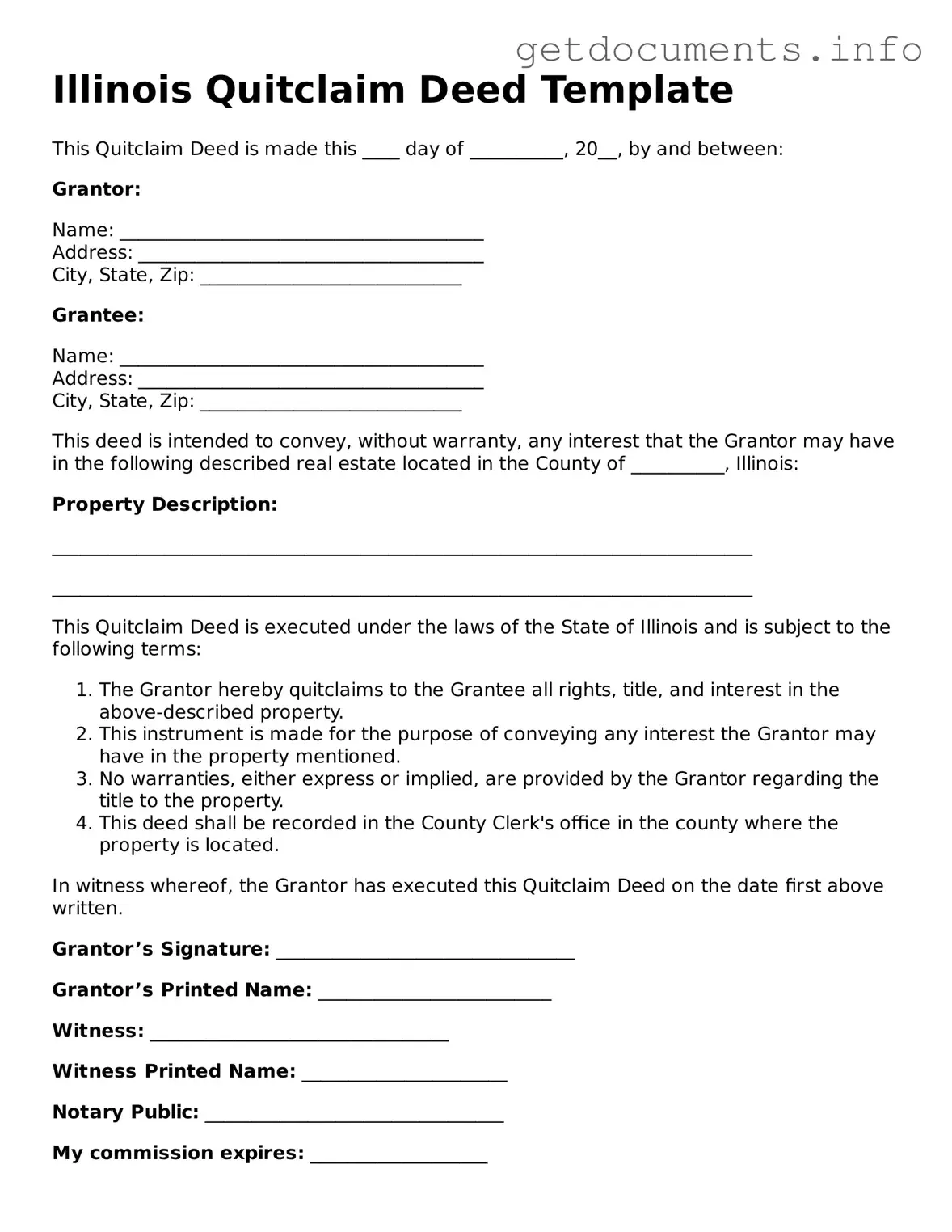The Illinois Quitclaim Deed form serves as a crucial legal document for individuals looking to transfer property ownership without the complexities often associated with traditional deeds. This form allows a property owner, known as the grantor, to convey their interest in a property to another party, referred to as the grantee. Unlike warranty deeds, quitclaim deeds do not guarantee that the grantor holds clear title to the property; rather, they simply transfer whatever interest the grantor may have. This makes the quitclaim deed particularly useful in situations such as transferring property between family members or resolving disputes over property rights. The form requires essential information, including the names of both parties, a description of the property, and the signatures of the grantor and any witnesses, depending on the specific requirements of Illinois law. Understanding the implications of using a quitclaim deed is vital, as it can significantly affect future ownership rights and responsibilities. Thus, both parties should approach this process with care and consideration.
